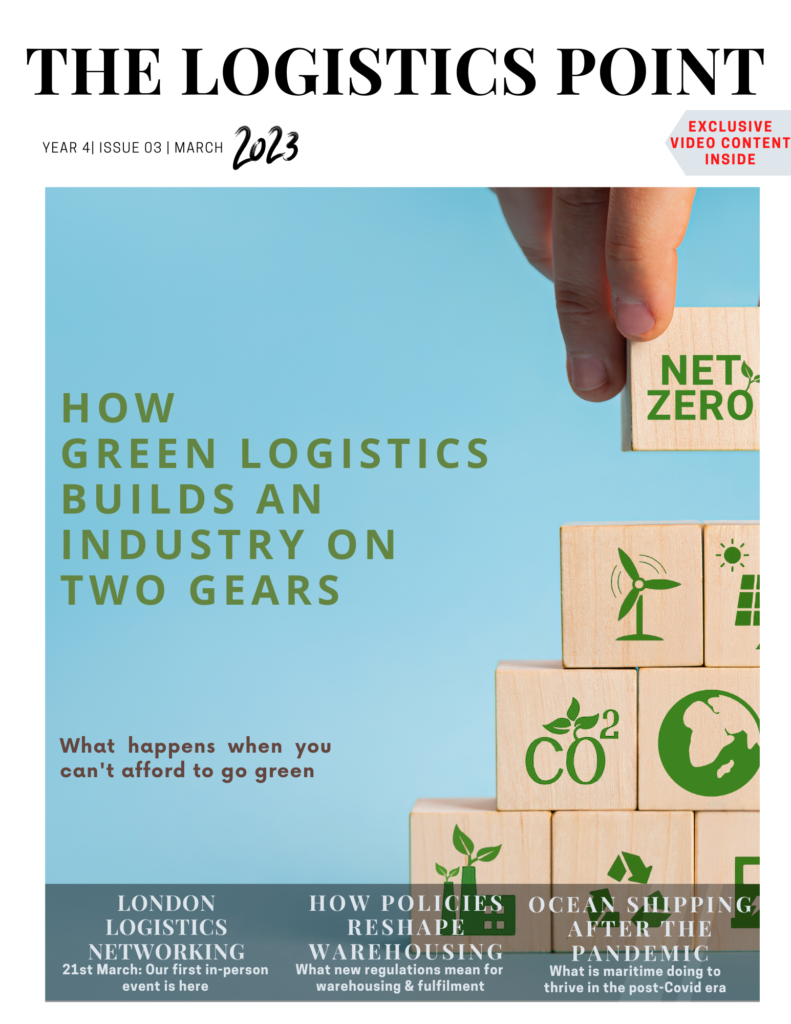2022 continued to present an array of challenges for retail, logistics and supply chain professionals. Although Covid19-related restrictions were lifted, its challenges were replaced by the war in Ukraine and the subsequent knock-on-effects relating to it; including energy cost increases, a rise in inflation and cost-of-living, and sustainability concerns. Meaning, for many retailers agility has remained key to business resilience, and growth.

Andrew Tavener, Head of Fleet Marketing EMEA, Descartes Systems Group, reflects on the energy cost challenge businesses and consumers face. He explains the key role that route planning and optimisation plays in enabling retailers to tackle 2023 with optimism.
UK fuel and energy costs are a cause for concern for many in 2023
Since the war in Ukraine, inflation peaked in the UK at 11% in October 2022 – related to this is the cost of fuel and energy, which is presenting significant challenges for consumers and businesses. In the case of consumers, it has caused them to evaluate their spend on non-essential purchases. For instance, UK homes have cancelled 2m streaming services as the cost of living has soared.

In comparison, the spike in energy and fuel costs has consequences for retailers that are operating buildings, outlets/stores, or delivering goods; with diesel costing £2 per litre last autumn.
Thankfully, though, in January, falling petrol and diesel prices have caused some relief; with petrol averaging around £1.50 a litre, and diesel on its way to below £1.70 (source: Parkers and RAC Fuel Watch). This cost decrease has to be viewed with pragmatic foresight. A predicted rise in fuel duty is expected in March 2023, with The Office for Budget Responsibility (OBR) forecasting fuel costs will rise by 23%. As you can imagine, this will impact retail deliveries across the board.
Alongside this, the cost of electricity continues to increase. This naturally has consequences for the entire retail value chain. Buildings will cost more to operate and electric vehicle fleets will likely cost more to run too. It begs the question – how can retailers minimise the impact on their costs and prices to the consumer?
Keeping vehicle fuel costs down with effective route planning and optimisation
Clearly, many macro-economic factors are challenging the retail outlook. So, what can retailers improve and control as they take on 2023? Digitisation continues to offer a powerful answer; but what technology in particular can help make a significant difference to retailers’ cost base as they seek to operate as efficiently as possible?
In the case of many bricks n’ mortar and ecommerce retailers, products will need to either be transported to a respective retail outlet and sold directly to the consumer; or stored within an ecommerce fulfilment centre and eventually delivered to a consumer.

In either case, fleets of vehicles are used to transport goods. So, as fuel costs spike, this needs to be factored into the total cost of sale. With diesel and electricity costs set to increase, fleet managers need to consider the vital role their fleets can play in keeping the total cost of sale (and returns) down.
This is where specialised route optimisation and delivery scheduling tools enables retailers to minimise the miles driven and increase the delivery density; to reduce fuel consumption and CO2 emissions, to offer a more sustainable delivery to consumers. Therefore, using less fuel and fewer vehicles to deliver more in fewer miles also equates to lower vehicle maintenance. Further, as many organisations face increasing global, governmental and consumer pressure to reduce carbon footprints, this technology has a crucial role to play. Used effectively it will cut costs and carbon emissions; which can hopefully be passed to the consumer in a way that enables the retailer to profit, while supporting consumer needs.
Topps Tiles, the leading U.K. tile retailer, for instance, is optimising its fleet delivery capabilities with Descartes’ cloud-based route planning and optimisation solution. It is decreasing the average kilometres driven per delivery route by two percent, and gaining a better understanding of the potential impact of changes to its delivery strategies.
Conclusion
As we come out of the pandemic, many retailers have had a rough 2022. Although the market is fraught with inflationary, cost of living, cost of energy and recessional pressures, consumers are still purchasing goods – their expectations and hopes are, however, somewhat skewed towards locating the best deals and delivery experiences for their spend. So if retailers can get more out of their transport operation they don’t need to pass excessive cost spikes to their shoppers. In addition to maintaining proof that their efforts are having a net positive effect on sustainability initiatives, this will all help provide a competitive edge and have a positive impact on their brands, as they look to make it through 2023 and onto growth.


